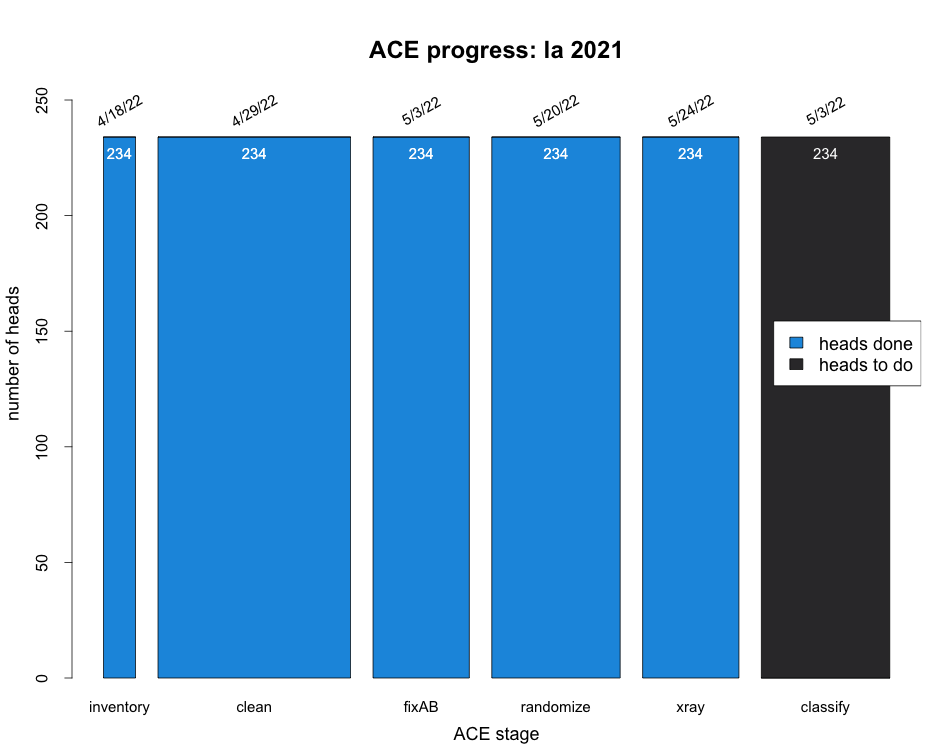Good news on the Liatris front: all hands-on work, from harvesting to x-raying, is complete! The process began in the summer of 2021 and involved lots of help from the field crew, wise, long-term Team Echinacea members, eager and efficient short-term members, and everyone in between.
Mia V and I were also able to complete data entry and data cleaning today, paving the road forward for analysis.

Now that we’re moving on to computer work, we came up with some primary questions to pursue (and some hypotheses):
- Is there a significant difference in seed predation rates between burned and unburned and unburned remnants?
- We suspect that predation will be higher in burned remnants because density of plants will be higher
- Is there a correlation between seed predation rates and plant density?
- We hypothesize that higher density will be correlated with higher rates of predation
- We will use nearest neighbor as our measure of density
- Is there a correlation between individual plant size and predation rates?
- We hypothesize that larger plants will receive higher rates of predation
- We will use number of flowering heads as our measure of plant size.
I’m now in the process of making plots to help us visualize the data we’ve collected, and soon we can begin to seek answers for our questions.
Because none of our questions at the moment directly relate to pollination, we don’t need to quantify seed set, which is the “classify” step. Using the x-rays to count how many achenes contain seeds is our method of determining pollination rates (seed = pollinated, no seed = not pollinated). This step will likely stay low priority for awhile, so don’t fret about the empty bar. All part of the plan.
Huzzah!

Leave a Reply